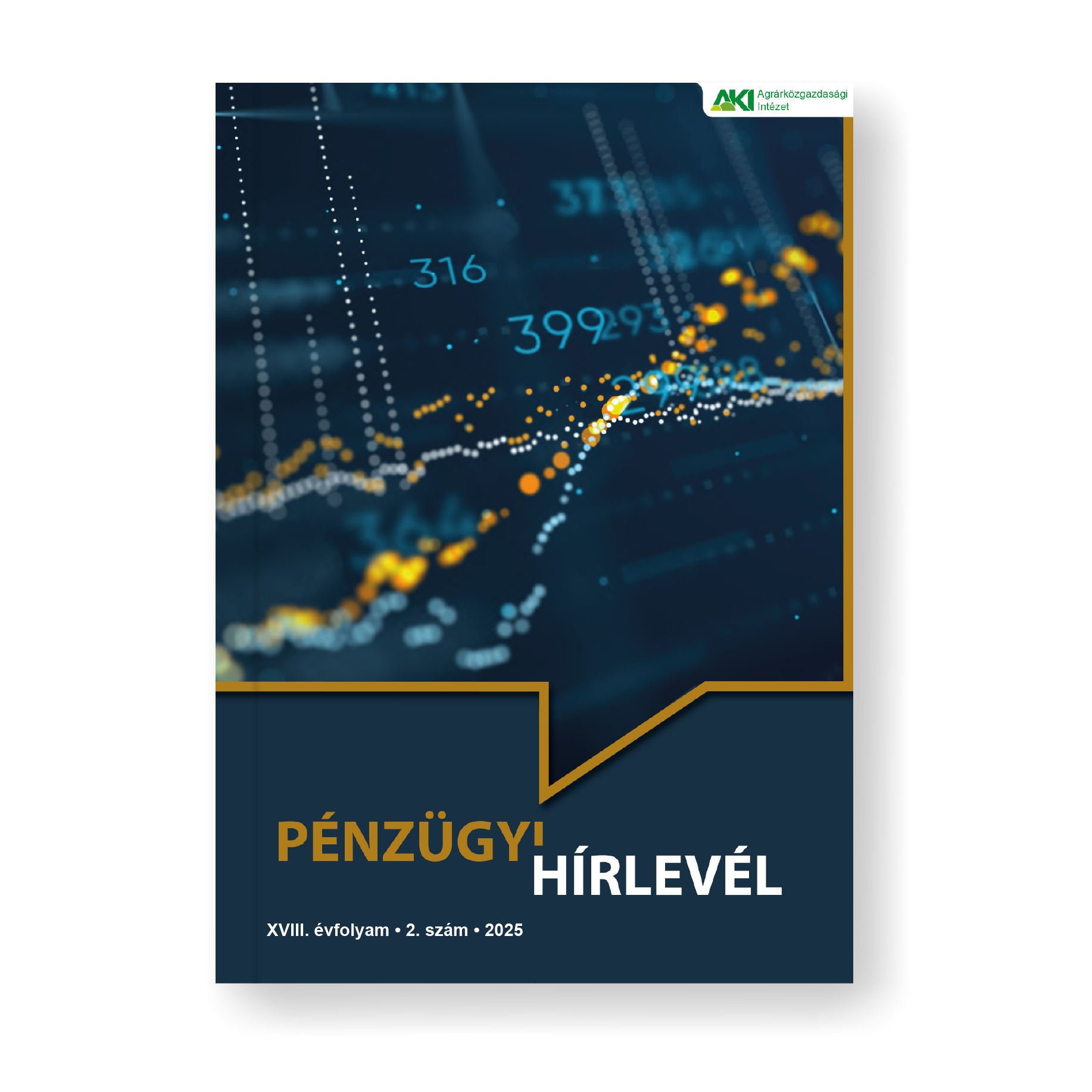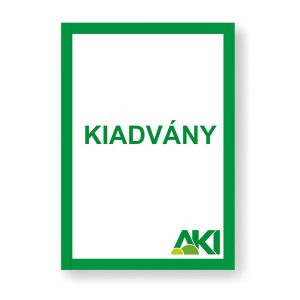Leírás
• A 2021–2022-es átmeneti évek után 2023. január 1-jén hatályba lépett a 2023–2027-es időszakra szóló közös agrárpolitika. Ezzel párhuzamosan tart még a 2014–2020-as ciklus lezárása.
• Agrár- és vidékfejlesztési támogatásokra 274,2 milliárd forintot fizettek ki március 31-ig. A folyósított támogatási összeg 54,3 százaléka (148,8 milliárd forint) európai uniós forrásból származott, 45,7 százalékát (125,5 milliárd forint) hazai költségvetésből fizették ki.
• Az agrár- és vidékfejlesztési támogatások között a közvetlen támogatások, illetve a vidékfejlesztési és halászati programok kifizetései domináltak (43,6 és 42,4 százalék), összegük 119,5 milliárd és 116,4 milliárd forint volt. A nemzeti támogatások a kifizetések 12,7 százalékát képezték, 34,8 milliárd forint kifizetésére került sor 2025. március 31-ig. A piaci és egyéb támogatásokra együttesen 3,5 milliárd forintot folyósítottak.
• Az egyes ágazatok támogatottságát vizsgálva elmondható, hogy a szántóföldi növénytermesztők kapták a támogatások 43,4 százalékát, az állattenyésztők a támogatások 14,5 százalékát használhatták fel, a kertészet részesedése pedig csupán 3,6 százalék volt.
• A nemzeti agrárkárenyhítési rendszer keretében (I. pillér) a 2024. évi időjárás okozta károk kompenzálására 29,6 milliárd forintot folyósítottak 2025-ben a jogosult termelők számára.
• A mezőgazdaság hitelállománya 6,0 százalékkal 1001,2 milliárd forintra mérséklődött az előző év azonos időszakához képest. Ezen belül a kedvezményes hitelek aránya 62,6 százalékot, a piaci hitelek részesedése pedig 37,4 százalékot tett ki 2025. március 31-én.
• A mezőgazdaságban tevékenykedő egyéni gazdaságok hitelállománya 4,9 százalékkal 360,7 milliárd forintra csökkent. Az egyéni gazdaságok hitelein belül a legnagyobb hányadot kitevő (67,0 százalék) beruházási hitelek 5,5 százalékkal 241,6 milliárd forintra mérséklődtek. A hitelek zöme a szántóföldi növénytermesztőket finanszírozta.
• A mezőgazdaságban tevékenykedő egyéni vállalkozások újonnan felvett hiteleinek öszszege 10,6 milliárd forinttal volt kevesebb az egy évvel korábbinál.
• A mezőgazdasági társas vállalkozások hitelállománya 6,5 százalékkal 640,5 milliárd forintra csökkent, amelyben a hosszú lejáratú forgóeszközhitelek játszották a legfőbb szerepet. A hitelállományból legnagyobb mértékben az állattenyésztési ágazat részesedett.
• A mezőgazdasági társas vállalkozások újonnan felvett hiteleinek összege 9,5 milliárd forinttal volt több az egy évvel korábbinál.
• A mezőgazdaság garantált hitelállománya dinamikusan nőtt. A lízingcégek szerződésszáma növekedett, a tőkekintlévőség összege mérséklődött.
• A jegybanki alapkamat, valamint a mezőgazdasági hitelek kamatlába egyaránt mérséklődtek. A mezőgazdasági piaci forinthitelek kamatainak csökkenése minden alágazatban jelentősen meghaladta a devizahitelek kamatainak csökkenését.
• Az élelmiszeripar hitelállománya 4,3 százalékkal 710,6 milliárd forintra csökkent 2025 első negyedévének végére. Az ágazat hitelállományában a kedvezményes hitelek aránya 40,0 százalékot tett ki, amely jóval kisebb volt, mint a mezőgazdaságban felvett kedvezményes hiteleké.
• Az egyéni vállalkozások hitelállománya 5,3 százalékkal 5,1 milliárd forintra emelkedett, a társas vállalkozásoké 4,3 százalékkal 705,5 milliárd forintra csökkent. A rövid lejáratú hitelek aránya 2025 első negyedévében a teljes egyéni hitelállományból 45,4 százalékot, a társas hitelállományból 33,2 százalékot tett ki. A társas vállalkozások hitelállományának legnagyobb részét, a kiemelt szakágazatok közül, az egyéb gyümölcs-, zöldségfeldolgozás, -tartósítás szakágazatban tevékenykedő vállalkozások adták (11,5 százalék), ezt követte a baromfihús feldolgozása, tartósítása szakágazat (8,8 százalékkal).
• Az élelmiszeripari társas vállalkozások újonnan felvett hiteleinek összege 6,4 milliárd forinttal haladta meg az egy évvel korábbi. Az ágazat garantált hitelállománya 6,8 százalékkal csökkent 2025 első negyedévére.
• Az ágazati csődrátát ágazatonként eltérő trend jellemezte, azonban mértéke mind a mezőgazdaságban (3,7 százalék), mind az élelmiszeriparban (4,2 százalék) alacsonyabb volt a nemzetgazdasági szintnél (5,3 százalék) a vizsgált időszak végén.
• A mezőgazdasági hitelportfólió minősége tovább romlott 2025 első negyedévében.
• A nemteljesítő hitelek aránya (NPL-ráta) a mezőgazdaság szinte minden alágazatában és szinte minden hiteltípusnál javult (csökkent). Az élelmiszeripari alágazatok túlnyomó részében szintén enyhe javulás volt megfigyelhető az előző év azonos időszakához képest.
• Az értékvesztéssel való fedezettség mindkét szektorban mérséklődött, a mezőgazdaságban 2,7 százalék, az élelmiszeriparban 5,7 százalék volt a vizsgált időszak végén. A mezőgazdaságban majdnem minden hiteltípus értékvesztéssel való fedezettsége csökkent.
• Az élelmiszeripari piaci forinthitelek kamatai nagyobb mértékben ereszkedtek az egyes hiteltípusoknál, mint a devizahitelek esetében. Az élelmiszeripari alágazatok éven túli forinthiteleinek kamatai többnyire csökkentek.
• After the transition years 2021–2022, the Common Agricultural Policy for the period 2023–2027 entered into force on 1 January 2023. At the same time, the closing of the 2014–2020 period is in progress.
• A total of HUF 274.2 billion was paid for agricultural and rural development subsidies by 31 March. 54.3 per cent (HUF 148.8 billion) of the subsidies came from European Union funds and 45.7 per cent (HUF 125.5 billion) was paid from the domestic budget.
• Payments of direct subsidies and the rural development and fisheries programs and dominated in agricultural and rural development payments (43.6 and 42,4 per cent), their amount was HUF 119.5 and 116.4 billion. National subsidies accounted 12.7 per cent of the payments, HUF 34.8 billion was paid until 31 March 2025. HUF 3.5 billion was allocated to market and other subsidies.
• Examining the support of each sector it can be stated that arable crop growers received 43.4 per cent of the subsidies, while livestock farmers could use 14.5 per cent of the support and the share of horticulture was only 3.6 per cent.
• Within the framework of the national agricultural compensation scheme (Pillar I), HUF 29.6 billion was paid to eligible farmers in 2025 to compensate for the damages caused by the weather in 2024.
• The amount of credit in agriculture decreased by 6.0 per cent to HUF 1001.2 billion compared to the same quarter of the previous year. Within this the rate of subsidised loans was 62.6 per cent while the share of market loans was 37.4 per cent on March 31, 2025.
• The credit amount of the individual farms decreased, by 4.9 per cent to HUF 360.7 billion. Among the loans to individual farms, investment loans continued to predominate, with their stock moderating by 5.5 per cent to HUF 241.6 billion, accounting for 67.0 per cent of total loans. Most of the credits were used to support arable crop growers.
• The value of new loans of individual farms in agriculture was HUF 10.6 billion lower than in the previous year.
• The credit amount of the agricultural enterprises moderated by 6.5 per cent to HUF 640.5 billion. The decrease was caused mainly by the long-term working capital loans. The livestock sector accounted for the largest share of the credit.
• The amount of new loans taken out by agricultural enterprises was HUF 9.5 billion higher than in the previous year.
• The guaranteed loans of agriculture have grown dynamically. At the same time the contract number of leasing companies increased but their capital adequacy decreased in the sector.
• The base rate of the central bank and the interest rates of agricultural loans have decreased. The decline in the interest rates on market HUF agricultural loans has significantly exceeded the drop in the interest rates on foreign currency loans.
• In the food industry the amount of loans decreased by 4.3 per cent to HUF 710.6 billion by the end of the first quarter of 2025. The share of subsidised loans (40.0 per cent) in the sector’s loan portfolio was much lower than in the agriculture.
• The credit amount of the individual food companies increased by 5.3 per cent to HUF 5.1 billion, and of the corporate enterprises decreased by 4.3 per cent to HUF 705.5 billion. The share of short-term loans of total ‘individual’ loans was 45.4 per cent, while in case of ‘corporate’ loans it was 33.2 per cent in the first quarter of 2025. The biggest part (11.5 per cent) of the loans in the food industry was granted for food corporations operating in the processing and preserving of other fruit and vegetables priority sector. This was followed by the processing and preserving of poultry sector with a share of 8.8 per cent.
• The amount of new loans of corporate enterprises in the food industry was HUF 6.4 billion higher than in the previous year. Guaranteed loans of the sector decreased by 6.8 per cent in the first quarter of 2025.
• The sectoral rate of the risk of bankruptcy showed a different trend in agriculture and in the food industry. However, the values of the agricultural sector (3.7 per cent) and that of the food industry (4.2 per cent) were both lower than the national economy-wide level (5.3 per cent) at the end of the examined period.
• The quality of the agricultural loan portfolio further deteriorated in the first quarter of 2025.
• The non-performing loan ratio (NPL ratio) improved (decreased) in almost all sub-sectors and regarding almost all (short- and long-term) loan types in agriculture. Most food sub-sectors also showed a slight improvement compared to the same period of the last year.
• Coverage of credit impairment charges fell in both sectors, to 2.7 per cent in the agriculture and 5.7 per cent in the food industry by the end of the period. Impairment coverage decreased in case of almost all loan types in agriculture.
• In the food industry interest rates on market HUF loans declined more for each loan type categories than for foreign currency loans. In the food sub-sectors interest rates on long-term HUF loans mostly decreased.



 EN
EN

